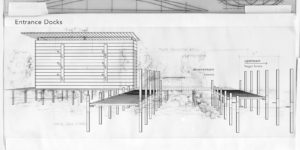
Melody Stein (MLA ’19) and Emily Hicks (MLA ’19) are the recipients of the 2019 Landscape Architecture Thesis Prize for Wild Rice Waters: Recovering Practice in the St. Louis River Estuary, a proposition for recovering the St. Louis River Estuary through the practice of harvesting wild rice. The homeland of the Fond du Lac band of Ojibwe people in the St. Louis River Estuary was once blanketed with wild rice (Zizania palustris). “Wild rice is a culturally and spiritually important wild grain that has been hand-harvested from the lakes and rivers of the Great Lakes Region for thousands of years. Today, wild rice harvest remains a treaty-protected right for all Ojibwe people in Minnesota. As the estuary lost its wild rice to land dispossession, resource extraction, and industrialization, the people of Duluth have also lost their estuary.” Associate Professor of Landscape Architecture Rosetta S. Elkin served as the pair’s Faculty Advisor.
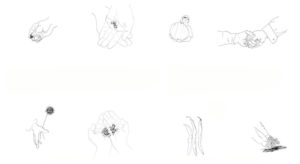
Kathryn Gourley (MUP ’19) is the recipient of the 2019 Urban Planning and Design Thesis Prize in Urban Planning for It Starts with a Seed: Exploring Place-Based Socio-Ecological Care and Alternative Economies in Community Seed Saving Initiatives, a project that addresses biotechnology, intellectual property rights, and corporate consolidation in the food industry by encouraging urban community seed-saving initiatives. “Applying the lens of feminist political ecology, which centers the study of care, everyday life, and practices which establish ‘diverse economies,’ this project examines particular trends in the seed sovereignty movement as they play out in North American seed libraries. Specifically, through a multi-site case study in the Bay Area, it reads the act of seed-saving as a practice of place-based socioecological care, and public seed libraries as alternative economies that facilitate the translation of that care to the public sphere by a process of re-commoning.” Lily Song, lecturer in urban planning and design and research associate, served as Gourley’s Faculty Advisor.
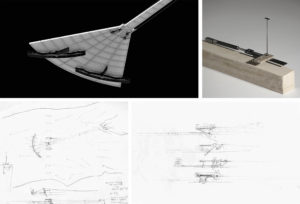
Aimilios Davlantis Lo (MArch II ’19) is the recipient of the 2019 James Templeton Kelley Prize, Masters in Architecture II for Rain Bridge, a stress ribbon footbridge on Washington DC’s Potomac River. Rain Bridge spans from the Little Island (south of Roosevelt Island) to the Arlington Memorial bridge, where a new path passes through and under the center bascule of the existing bridge. The new pedestrian bridge terminates with a fan-shaped floating deck, creating a public space at the center of the river. Inspired by Christo and Jean Claude’s floating piers in Italy, and Jurg Conzett’s punt da Suransuns in Switzerland, the project brings pedestrians into close proximity with the surrounding water and landscape. “The bridge is a mechanical instrument that amplifies the forces of the river’s current to pull itself taut. It utilizes the double luff tackle mechanism and is strung with cables to create a lift that is in constant oscillation. As the daily tides shift and the water discharge fluctuates between seasons, the floating concrete deck, which extends beyond the Arlington Memorial Bridge, offers various functions–from a canoe storage framework to a concert stage structure. The bridge animates the river within the heart of DC’s picturesque landscape, serving as a dynamic contrast to the static monuments of the city, revitalizing the old Memorial Bridge with a tactile counterpoint.” The project was completed for the Spring 2019 option studio “The Anamorphic Double: A Bridge for DC,” led by Professor of Architecture Grace La and Design Critic in Architecture James Dallman.
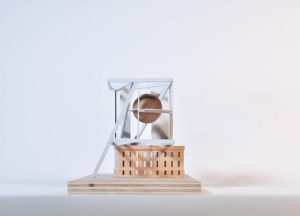
Morgan Starkey (MArch I ’19) is the recipient of the 2019 James Templeton Kelley Prize, Masters in Architecture I, for Mixed Metaphors: The Poetics of Gravity, Machines, and Empathy, a project that seeks to “complete” New York City Hall, a grand neoclassical courthouse originally commissioned by Boss Tweed. Then the head of the New York City’s foremost political machine, Tweed used the building project to embezzle hundreds of millions of (2019) dollars and was later convicted in the unfinished courthouse and sent to prison. The central feature of the building, its Beaux Arts dome, was never completed and the building today is capped by a simple glass atrium. Starkey suggests an inverted dome held precariously in compression by the weight of a hung prisoner detention mass below. The intervention cantilevers over City Hall Park, propped on one corner and tied back with a tension member in another. “At every scale, the building attempts to turn the tectonic into the scenographic, choreographing ostensibly inefficient structural solutions with the complex circulation and programmatic concerns required by the modern courthouse. The building is precariously held in balance through this combination of simple machines and props, where an intentional conflation of sociological and physical weight orients the courthouse’s various users through its constituent parts, each dependent on each other to stand.” Starkey worked with Faculty Advisor Andrew Holder, assistant professor of architecture.
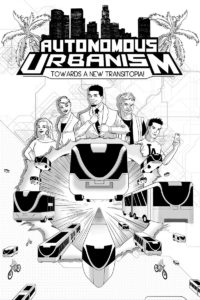
Evan Shieh (MAUD ’19) is the recipient of the 2019 Urban Planning and Design Thesis Prize in Urban Design for Autonomous Urbanism: Towards a New Transitopia!, a manifesto that envisions a near future (the year 2047) in which the Autonomous Vehicle causes a mobility paradigm shift towards autonomous public transit in Los Angeles. As a model of regional urban growth, Shieh’s project seeks to combat urban sprawl, traffic congestion, environmental unsustainability, and mobility inequality. “The manifesto instrumentalizes automation as a revolutionizing force in the NextGen bus transit network of LA, introducing a new range of automated vehicle sizes that plug mobility gaps while simultaneously critiquing current LA transit agencies’ obsession with the expansion of its light rail network.” The manifesto proposes an alternative, top-down, AV-incorporated transit planning model that is populated by a bottom-up narrative framework, a graphic novel that envisions this future world through the eyes of four distinct Angeleno archetypes as they experience this mobility paradigm shift first-hand. ” [It tells] a radical story that might convince the everyday Angeleno that alternatives to car culture can exist, a set of concrete policies that would enable this potential LA of 2047 to emerge, and finally a set of urban implications and lessons-learned for the design and planning of the city of the future.” Assistant Professor of Urban Planning Andres Sevtsuk served as Shieh’s Faculty Advisor.